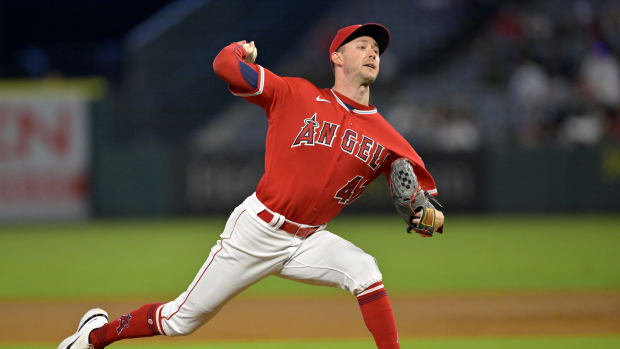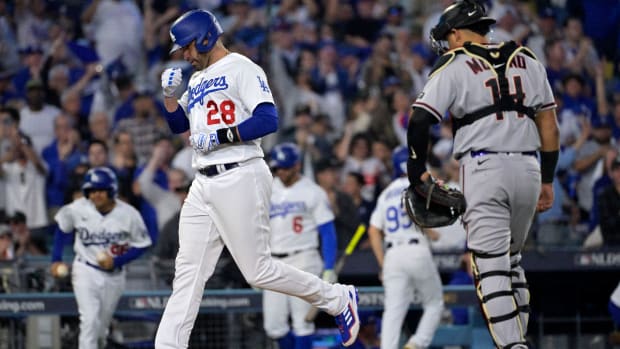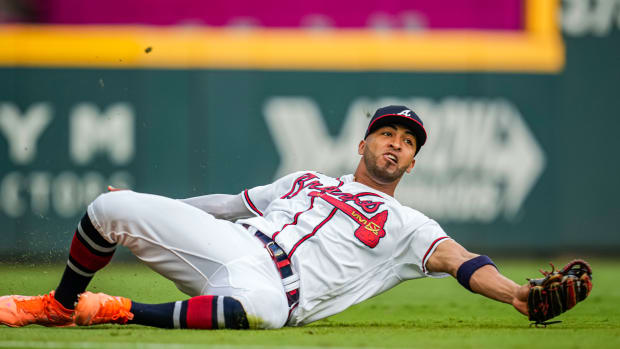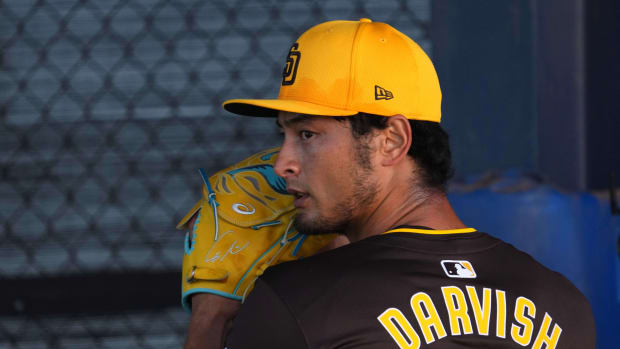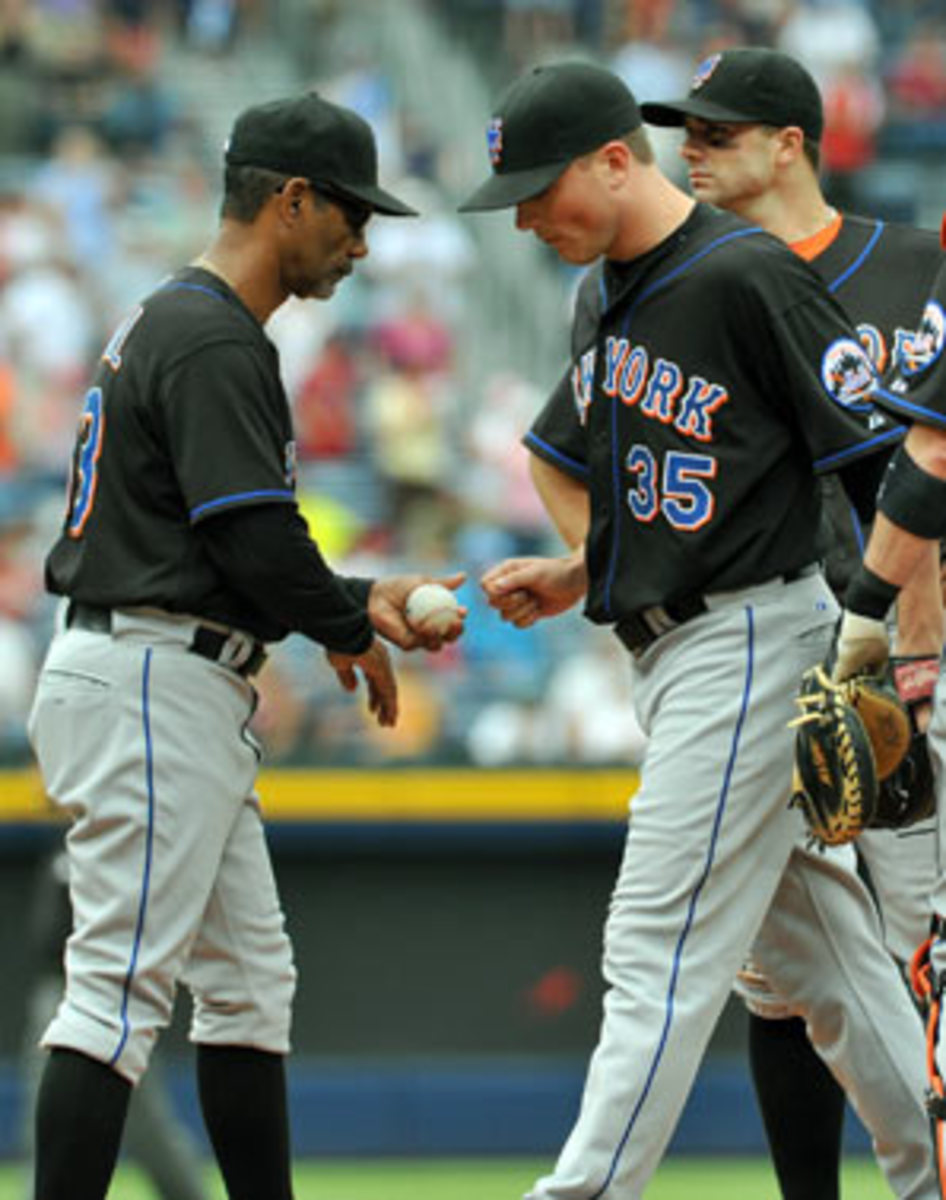
Unconventional Wisdom: Breaking down the Mets bullpen
That the Mets remain in the hunt for a postseason berth despite Wagner's injury is something short of a miracle, given the other obstacles they've had to overcome. Despite the drama of last year's collapse, they entered 2008 with the league's highest payroll and top PECOTAforecast, and they've largely lived up to their promise:
Their offense is second in the league in scoring (5.0 runs per game) despite playing half of their games in a pitcher-friendly park; adjusting for that, they lead the league in Equivalent Average, and with David Wright, Jose Reyes and Carlos Beltran, their lineup features three of the top eight players in the league in Adjusted Runs Above Position.
Their rotation, despite the loss of John Maine, the steep decline of Pedro Martinez, and the box of chocolates that is Oliver Perez,ranks fourth in the league in Support Neutral Lineup Adjusted Value Above Replacement, which isolates the starters' efforts from the effects of bullpen and offensive support.
Their defense is second in the league in Defensive Efficiency, the rate at which they convert batted balls into outs.
On the whole, the Mets are third in the league in run differential and tied for third in wins. For them not to be in the playoff hunt would be an upset.
However, Wagner's injury exposed the Mets' Achilles heel, their bullpen, and if they don't make the playoffs they can hang a good share of the blame on a unit that hasn't come close to holding up its end of the deal. The Mets have lost 28 games in which they were either ahead or tied after six innings, the most in the majors. That's partly a function of opportunity (they've played more games in which they were ahead or tied after six than any team) and partly a failure to execute (they're 5-15 when tied after six). They rank dead last in the league and 25th in the majors in Reliever Expected Wins Added (WXRL), unsurprisingly the worst among the dozen teams that retain a mathematical chance of playing in October.
The ranking is by overall standings in the majors, and make no mistake: For the Mets, that's ugly. In fact, if the Mets reach the playoffs without much improvement from their bullpen, their WXRL total would rank among the 10 worst for a playoff team since 1988, a year chosen to represent the dawn of the one-inning closer era:
Not surprisingly, the teams that made the playoffs despite such bullpen problems didn't last long; only two out of 10 won a playoff series, and none won a championship. Limiting the discussion to teams like this year's Mets, who were in the bottom quartile of their respective leagues in WXRL, narrows the list to seven, with one series win. This just in: a bad bullpen isn't part of a winning recipe.
The sad fact is that through the first half of the season, even with Wagner performing at a level far below his peak, the Mets actually had one of the league's better bullpens; their 6.1 WXRL through the All-Star break ranked third in the NL behind the Phillies and Dodgers. Since then, they've been a league-worst 1.4 wins below replacement level as a unit. Fill-in closer Luis Ayala (-0.04 WXRL since coming over from the Nationals on Aug. 17) is an obvious culprit, but he's hardly the only offender.
A quick peek at the individual numbers informs us that it's not hard to recognize a systemic combination of overuse and ineffectiveness. Of the six relievers whom Jerry Manuel has called upon most frequently, five have second-half ERAs above 4.90: Ayala (5.54, including his Washington stint), Pedro Feliciano (6.38), Aaron Heilman (6.75), Duaner Sanchez (6.00), and Joe Smith (4.91); Scott Schoeneweis (4.50) is the exception. Excluding the late-arriving Ayala, that bunch has combined for 152 appearances in 63 games since the break, a breakneck 78-game pace for each over the course of a season. Feliciano (83 games), Ayala (80) and Smith (79) represent three of the six major league pitchers stretched to that exhausting plateau over the full season, with Heilman (77) not far behind. Overall the Mets rank second in the league since the break with 227 relief appearances, an average of 3.6 per game.
Driving such a frenetic pace is a massive platoon split that has Manuel chasing the "right" matchups, following a single-minded La Russa-style tactical orthodoxy at the expense of more important strategic imperatives such as conserving bullpen arms over the course of the long season. When they have the platoon advantage (righty on righty or lefty on lefty), Mets relievers have limited hitters to just .225/.299/.325; ranked by OPS, that's an impressive fourth in the majors. However, when they don't have the platoon advantage, they've been tagged at a .294/.375/.479 clip, worst in the majors. The 227-point OPS difference between situations is the highest by a wide margin; second-highest are the Brewers at 188 points, and they just whacked a manager over his platoon-related shenanigans and bullpen mismanagement. The take-home message is yet another reminder that chasing matchups can easily backfire on a skipper, either by exposing lefty specialists such as Schoeneweis (.333/.421/.509 versus righties) or Feliciano (.357/.453/.561) to the point where they face more righties than lefties, or by shunting a heavier workload to the second- or third-tier pitchers in a bullpen.
Yet for all of those woes, things might be different if Wagner were still around. Despite a superficially tidy 2.30 ERA, the five-time All-Star had accumulated just 1.5 WXRL in about two-thirds of a season, after compiling 3.8 last year and 5.9 in 2006 (second in the league). Depending upon which model of Billy Wags you use as a benchmark, that's anywhere from one to four wins missing from his ledger. Even at its lowest, that margin may easily be the difference between a club playing its way into October and adding another season like their now-infamous 2007 collapse to give them a matched pair of late-season meltdowns.






























